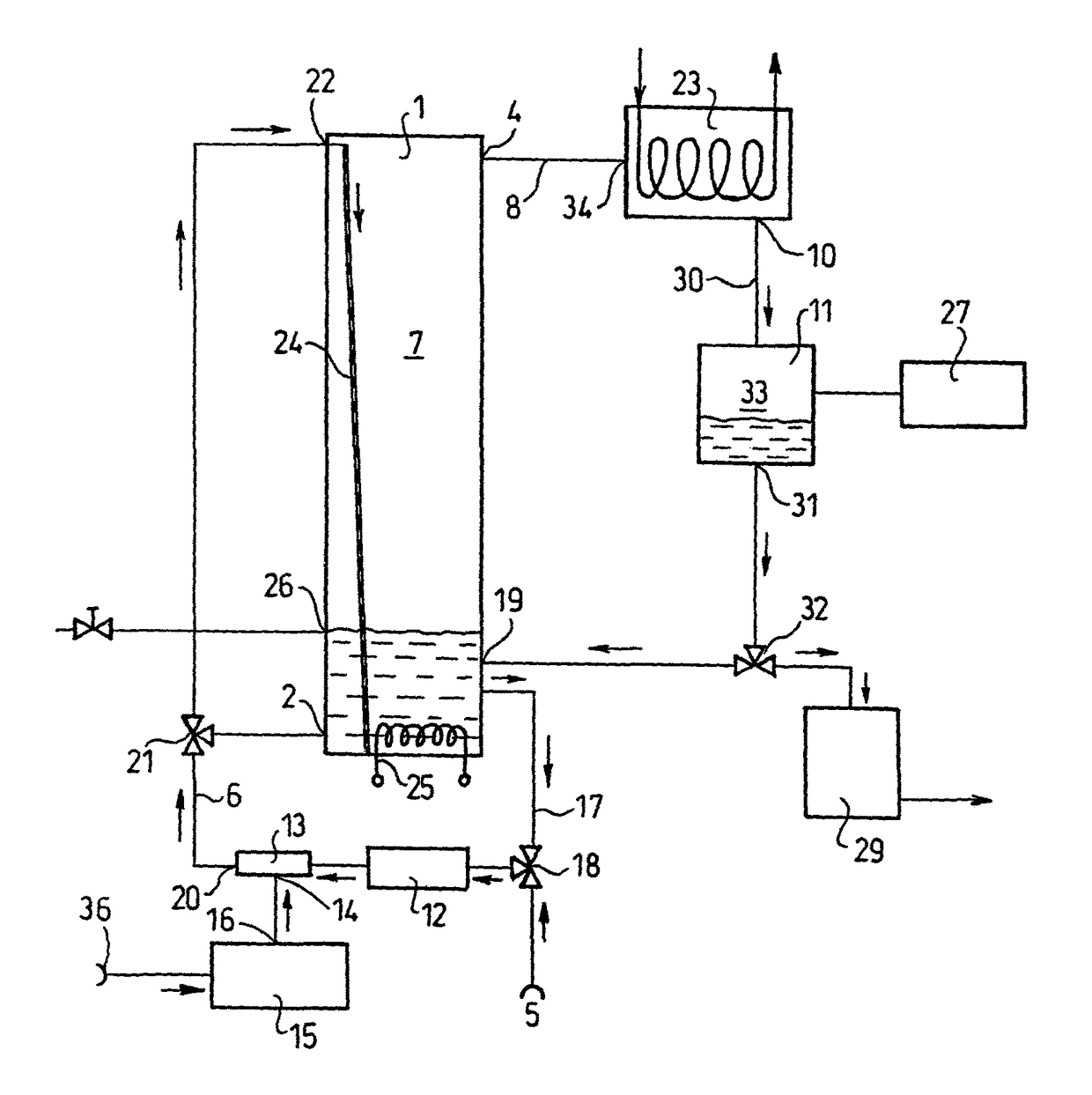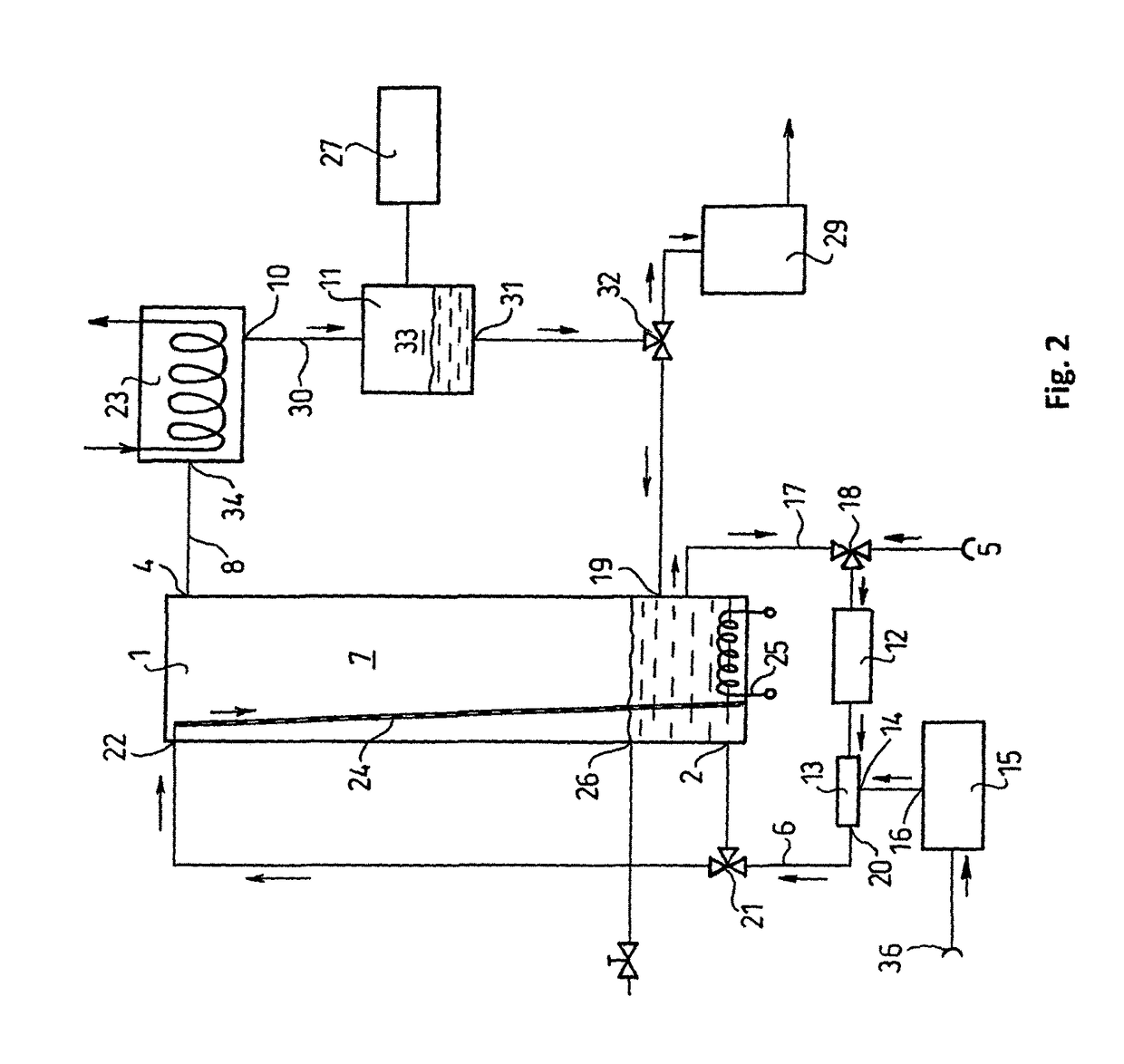Process and apparatus for the separation of the components of a liquid mixture
a technology of liquid mixture and components, which is applied in the direction of separation processes, liquid degasification, evaporation, etc., can solve the problems of low water carried in vapor, low fractionation constant, and difficult task of separation of compounds containing stable isotopes, so as to increase separation and increase the separation of components with different volatility
- Summary
- Abstract
- Description
- Claims
- Application Information
AI Technical Summary
Benefits of technology
Problems solved by technology
Method used
Image
Examples
example 1
[0115]A tank of 15 L volume and 25 cm diameter is filled with 10 L water. The liquid tank (1) can be heated from below by the heat transfer unit (25) so water temperature can be set to any value. At the top of the tank (1) are connected the thermometer (but is not shown on the Figure because it is obvious) and the condenser unit (9) (a tubular heat exchanger). Liquid inlet (2) and outlet (3) are built in the side of the tank (1).
[0116]The liquid inlet (2) connects the liquid tank (1) to the liquid pump (12) which delivers water, drawn from the liquid tank (1) via the liquid outlet (3), through the bubble generator (13) and the liquid inlet (2) back to the liquid tank. A compressor (15) is connected to the bubble generator (13) and feeds it continuously with air. The required water amount is fed into the system from the liquid source (5) by the unifier-distributor unit (18). The liquid condensing at the bottom of the water-cooled condenser unit (9) goes to the collector tank (11) whi...
example 2
[0119]Using the above prototype but running it at 80° C., the decrease of D content in the produced water was only 4.6 ppm. This showed that separation worsens with increasing temperature, proving the correctness of the theoretical background of the invention.
example 3
[0120]An apparatus set up from the elements in example 1, but modified as follows:
[0121]The liquid tank is 1 m high, 25 cm in diameter and contains 15 L water. The pipe leaving the bubble generator (13) is bifurcated in the distributor unit (21). One line delivers (as in example (1) bubble-saturated water to the bottom of the liquid tank (1) through liquid pump (12) and liquid inlet (2). The other line goes to the liquid inlet (22) arranged in the upper part of the liquid tank (1), and the bubble-saturated water flows down spreading on the wall of the tank, or down an extra surface-enlarging unit (24), expediently a sieve-like surface, to the bottom of the tank. The distributor unit (21) before the bifurcation regulates in what proportion the bubble-saturated water delivered by the liquid pump (12) goes to the two branches. This construction ensures that the bubbles leave the water flowing on the wall of the liquid tank (1) and so the amount of evaporated water is greatly increased....
PUM
| Property | Measurement | Unit |
|---|---|---|
| diameter | aaaaa | aaaaa |
| boiling point | aaaaa | aaaaa |
| boiling point | aaaaa | aaaaa |
Abstract
Description
Claims
Application Information
 Login to View More
Login to View More - R&D
- Intellectual Property
- Life Sciences
- Materials
- Tech Scout
- Unparalleled Data Quality
- Higher Quality Content
- 60% Fewer Hallucinations
Browse by: Latest US Patents, China's latest patents, Technical Efficacy Thesaurus, Application Domain, Technology Topic, Popular Technical Reports.
© 2025 PatSnap. All rights reserved.Legal|Privacy policy|Modern Slavery Act Transparency Statement|Sitemap|About US| Contact US: help@patsnap.com



